Our VP, TJ Scherer, was quoted in an article from Captive.com, titled “Property Captives Flourish Despite Softening Market”, he explained how the softening P&C market has allowed for more breathing room for employers; you can find the full article here.
As society increasingly pivots towards clean and green energy solutions, driven by the imperative of sustainability and the dramatic effects of climate change, the energy landscape is undergoing a profound transformation. Companies across all industries are embracing renewable alternatives and adopting environmentally conscious practices. This shift can lead to many obstacles when it comes to liabilities and coverage. Last week, I had the pleasure of attending the International Risk Management Institute (IRMI)’s Energy Risk & Insurance Conference (ERIC) which tackled this very issue. Experts across the risk management industry convened to discuss emerging energy risks and potential solutions. I had the pleasure of presenting on this topic, “Captives—Too Late for Fossil Fuels or Too Soon for Green Energy?” and wanted to share some key insights.
The Legacy of Traditional Energy
For decades, traditional energy sources like coal, oil, and natural gas have served as the pillars of global energy infrastructure. These sources have powered industries, fueled transportation, and sustained economies worldwide. However, their reliance on finite resources and contribution to environmental degradation have brought their sustainability priorities into question.
While traditional energy remains deeply entrenched in global economies, its future is increasingly uncertain. Mounting pressure to reduce carbon emissions, coupled with the emergence of renewable alternatives, has catalyzed a shift towards cleaner energy sources.
The Promise of Renewable Energy
The rise of renewable energy technologies such as solar, wind, and hydroelectric power represents a socio-economic shift towards sustainability. These sources offer cleaner alternatives, reducing carbon emissions and mitigating the impacts of climate change. Their abundance and renewable nature make them promising candidates for a greener future.
However, the transition to renewable energy has its challenges. The intermittency of renewable sources coupled with the need for infrastructure investments, presents hurdles to widespread adoption. The inertia of traditional energy industries along with regulatory complexities further slow down the pace of transition.
The Role of Captive Insurance
Amidst this energy transition, captive insurance has been at the forefront for risk management teams trying to optimize coverage and reduce costs. With few regulations, many insurers are moving away from insuring coal and creating more inclusive policies for oil and gas. It is estimated that 62% of reinsurers now have coal exit policies and 38% have oil and gas exclusions as shift away from fossil fuels accelerates.1 Insurance coverages and costs coupled with sustainability priorities have many organizations questioning if switching to alternative energy sources is critical.
On the other end of the stick, insuring green/new energy has not been easy. Although we are seeing new coverages such as leakage insurance for CO2, and coverage for solar, hydrogen, and bioenergy, pricing and underwriting remain huge issues. With any new risks, there are still untested coverages and language that may lead to future conflict when claims are filed. Many insurers also worry about the scalability of the new coverages once many companies shift to green energy; how will the underwriting processes and pricing shift or scale once more companies adopt green energy?
This natural lack of transition had sprouted a giant funding dilemma of insuring energy companies. Although many large companies are self-insured and/or adopt captive insurance as a solution, often mid and smaller companies are stuck in no-man’s-land. Many of these companies are looking into alternative funding options, such as a group captive, to help share risks with similar organizations without paying obscene premiums. This allows mid and smaller energy companies to meet lender requirements at lower rates and reduce net costs through reinsurance.
Where are Things Headed?
I expect in the coming years we may see drastic changes in how energy companies are insured; a lot depends on how committed commercial insurers are to exiting certain industries and promoting new energy coverages. There seem to be certain lines/industries that scale faster, both with regard to comprehensive underwriting processes and pricing volatility. Another significant consideration is governmental/regulatory changes. With climate change as a major political issue, policyholders and insurance companies may need to adapt more quickly if regulations are passed pushing for the use of green energy.
In conclusion, the dichotomy between old and new energy and how to properly insure them is a hot-button topic in the risk world. As older energy sources, such as coal, are becoming more and more uninsurable, newer green energy sources are untested and challenging to underwrite. We are in an interesting position where insurance companies and policyholders know they must shift towards renewable energy but cannot properly insure it (yet). Although alternative funding options, such as captive insurance, have proved thus far to be a solution, there are still so many unforeseen variables that will undoubtedly affect how energy is insured.
1 https://global.insure-our-future.com/with-new-coal-uninsurable-insurers-start-to-move-on-oil-and-gas/
Our VP, TJ Scherer, was recently quoted in an article from Captive.com spotlighting how captive domiciles count captives differently, which can influence how people and organizations view successful domiciles. Check out the full article here.
During the Captive Insurance Companies Association (CICA)‘s Annual Conference this year, Global Captive Podcast was on the scene interviewing captive leaders. Check out our VP, TJ Scherer’s interview here.
As societal norms and workplace attitudes continue to shift, the property and casualty (P&C) insurance space has been significantly impacted by a phenomenon known as social inflation. This trend has presented challenges for insurers, actuaries, and risk managers alike, leading to increased costs and complexities in compliance and managing risks. In this article, we delve into the concept of social inflation, explore current trends, and discuss strategies that employers can employ to address its effects effectively.
Background
For the purpose of this article, social inflation refers to the rising insurance claim costs above economic inflation due to societal and legal trends that increase the dollar amount of claims settlements and judgments. It encompasses various factors, including evolving attitudes toward litigation, changing legal interpretations, and increasing jury awards. For instance, more employees are seeking legal counsel to resolve workplace-related issues and asking for higher settlements than in the past. Several underlying elements that contribute to social inflation include:
- Litigious Culture: Society’s growing propensity to turn to litigation as a means of workplace conflict resolution has fueled an increase in the frequency and severity of insurance claims.
- This phenomenon is playing out across multiple lines of coverage including Workers’ Comp, Employment practices liability insurance (e.g., employee misconduct, sexual harassment, wrongful termination, etc.) professional/general liability, and auto (both individual and commercial). It is important to note as litigiousness varies by state/region so does the impact of social inflation on insurance cost between two different locations.
- Judicial Trends: Courts’ and jury’s decisions and interpretations of laws, particularly regarding liability and compensation, have become more favorable towards claimants, resulting in larger settlements and verdicts.
- Economic Factors: Economic downturns or uncertainties may prompt individuals to pursue legal avenues for financial security, adding to the volume of claims and the pressure on insurers to settle.
- Media and Advocacy Influence: Public perception and media coverage of high-profile cases can shape attitudes towards compensation and influence jury decisions, potentially leading to inflated awards.
- Litigation Funding: Third-party investors may provide litigation finance to plaintiffs, driving up pressure to prolong lawsuits and possibly resulting in higher awards and increased legal expenses.
The combination of these factors has created a challenging environment for insurers and businesses, leading to increased premiums and retained losses for the insured and reduced profitability, and greater uncertainty in estimating future liabilities for the insurance carriers.
Social Inflation’s Impact on the Market
Here are some ways social inflation has been impacting P&C markets:
- Rising Claims Costs: Insurers have experienced a notable uptick in claims costs across various lines of business, including auto liability, general liability, and professional liability.
- Increased Frequency of High-Dollar Claims: There has been a noticeable increase in the frequency of large claims and multimillion-dollar settlements, particularly in cases involving bodily injury, property damage, and product liability.
- Erosion of Underwriting Profitability: Social inflation has contributed to declining underwriting profitability for many insurers, as higher claim payouts outpace premium revenue growth therefore many carriers were forced to take large rate increases.
- Reserving Challenges: Insurers face challenges in accurately reserving for future claim payments, given the uncertainty surrounding the magnitude and frequency of social inflation-driven losses.
These circumstances underscore the need for proactive risk management strategies to mitigate the impact of social inflation on businesses and insurers alike.
Addressing Social Inflation: Strategies for Employers
In today’s dynamic business environment, where the landscape of P&C insurance is continually evolving, addressing social inflation has become a paramount concern for employers. Failing to acknowledge and mitigate the impacts of social inflation can lead to significant financial ramifications and operational disruptions for businesses of all sizes and industries.
- Risk Identification and Assessment: Employers should conduct comprehensive risk assessments to identify potential exposures to social inflation-driven claims. This involves analyzing industry trends, historical claims data, and emerging legal developments to anticipate future liabilities.
- Risk Optimization: Employers can explore alternative risk transfer mechanisms, such as captive insurance or excess liability coverage, to mitigate the financial impact of large claims and volatile insurance markets.
- Investment in Loss Prevention and Safety Programs: Proactive investment in loss prevention and safety programs can help reduce the frequency and severity of insurance claims, particularly with lines like workers’ compensation and auto. These programs, or lack thereof, will be imperative in claims settlements.
- Contractual Reviews and Protections: Employers should review and update contractual agreements to include indemnification provisions, liability limitations, and alternative dispute resolution mechanisms to mitigate the risk of costly litigation and claims disputes.
- Engagement with Legal and Insurance Partners: Collaboration and alignment with legal counsel and insurance partners is essential for staying informed about evolving legal and regulatory trends and developing effective risk management strategies tailored to the organization’s specific needs.
Social inflation poses significant challenges for insurance providers, businesses, and risk management teams. This requires a proactive and multifaceted approach to risk management, risk assessment, and corporate risk profile to adapt as the forces behind social inflation are constantly shifting. By understanding the underlying drivers of social inflation, monitoring industry trends, and implementing effective risk mitigation strategies, employers can better navigate this landscape and safeguard their financial stability in the face of uncertain liabilities.
As Captive International and Spring share the same birthday (March 24th), here is a collaborative Q&A with our leadership team. Some of the topics discussed include the progression of the captive industry, market challenges and future opportunities.
As Seen in Captive International’s Cayman Focus 2024
Total cost of risk (TCOR) is a buzzword in the insurance space, but it is a metric that carries significant operational weight, and can mean different things depending upon the organisation. There is no tried and true approach to TCOR, but we have gleaned valuable insights after consulting on the topic across a range of companies and risk profiles.
Leveraging those insights, we are sharing here a foundation for framing TCOR at your organisation, keeping in mind common dos and don’ts we have come across.
What is TCoR?
It’s important to start at the beginning. While there are various definitions out there, the International Risk Management Institute (IRMI) states that TCOR is the sum of all aspects of an organisation’s operations that relate to risk, both the cost of managing risks and the cost of losses incurred. These costs typically fall into the following categories:
- Retained (uninsured) losses and related loss adjustment expenses
- Risk control costs
- Transfer costs
- Administrative costs
More sophisticated risk management programmes may have internal risk control costs, whereas for other organisations these may be embedded into what is paid to a carrier with the goal of controlling loss.
Commercial insurance premiums are a prime example of a TCOR driver, representing what you are paying to transfer certain costs to the commercial or reinsurance market. Even for organisations with a captive, which is known to save organisations money in the long term, a risk transfer premium is still happening from the parent company to the captive.
Further, whether or not a captive programme is in place, most companies, especially those on the larger side, still retain a portion of their risk on their corporate balance sheet (eg, cyber deductible).
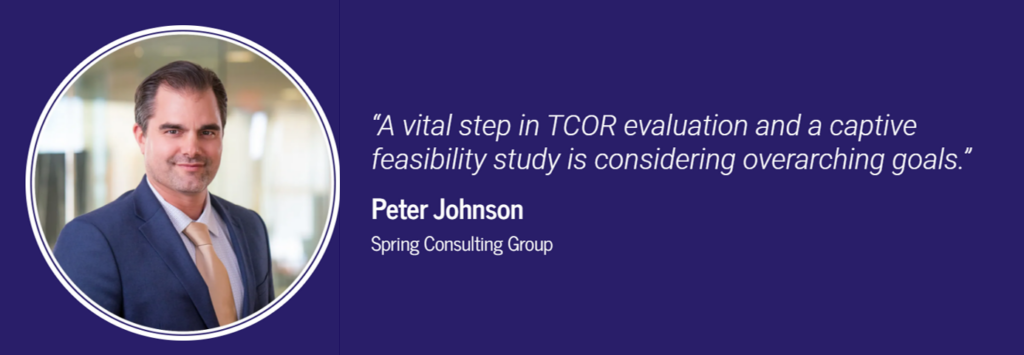
Building your TCoR
What constitutes TCOR varies across industries and company but regardless it can be backed by sophisticated risk management models as well as simpler calculations.
From a broad perspective, commonly overlooked considerations when it comes to tracking TCOR include:
- Beyond the frictional carrier or captive out-the-door premiums, other items budgeted for on the insured side such as safety programmes, loss control, and bonus programmes should be evaluated for inclusion or exclusion. If they are tracked within a captive premium (as is typically the case with loss control), such items are captured already so a company needs to be cognisant of not double-counting.
- Investment and underwriting income. Generally captives are priced to earn underwriting income and also earn investment income on the held assets to pay for unpaid claims. This income should be accounted for, which results in a lower TCOR.
- Softer costs such as risk management or safety personnel should be assessed for inclusion. Overall, consideration beyond obvious face-value expenses and including ancillary factors across the company provide a more robust calculation. Actuarial estimates of claims should be utilised for validation. Avoid relying solely on loss runs as this creates volatility because the third-party administrator (TPA) is typically only booking case reserves in the incurred claim estimates without factoring in the actuarial incurred but not reported development.
- Evaluation dates and look-back periods provide for quality tracking and the generation of trends, and should be assessed at various points in time. This is important when trying to compare the costs of various programmes related to budget and cash flow.
Perhaps most important is the need for year-over-year consistency regarding what is included in TCOR and what is excluded.
Who uses TCOR?
TCOR is meaningful to different stakeholders depending on the company, but these key audiences have important use cases for TCOR as follows:
- Risk managers leverage TCOR to show how they are approaching risk management and demonstrate how the company should retain risk, either through a captive premium or another method, as well as recommend what portion of risk should be transferred.
- Finance/accounting departments use TCOR to stress test and illustrate how much the organisation can afford and then plan for budgetary items that should reduce stated risk.
- Property and casualty (P&C) brokers care about TCOR because it enables them to benchmark and perform retention analyses in order to optimise programmes and mitigate volatility for their clients. TCOR allows them to make an apples-to-apples comparison year over year.
Trends and best practices
TCOR should not be touted simply because it sounds good. It needs to be grounded in analytics, formal reviews, and comprehensive reporting that outlines how TCOR is arrived at and what it means for your organisation. For large companies, TCOR may be factored into bidding, procurement, and contract processes. For smaller companies, there may not be enough critical mass to validate a self-funded approach, which means you’re more susceptible to market conditions and capacity.
From an organisational standpoint, TCOR plays a significant role in (i) accountability and compliance; (ii) making sure all assets, certificates of insurance, and contracts are listed; (iii) employees are accounted for; and (iv) there are no gaps in coverage that could change TCOR unexpectedly at the end of the year.
A vital step in TCOR evaluation and a captive feasibility study is considering overarching goals. If your company is looking to stay at cost, then moving to a captive may not always be the best play and you may be better off in the commercial market. This is why, as part of a TCOR analysis that is embedded within a feasibility study process as a means to reduce risk, alternative retentions in the market should be evaluated and the different scenarios to determine whether or not a captive makes the most sense outlined.

Other pieces of TCOR wisdom we have gathered over the years include:
- Fluctuations will happen from year to year, but some of the more volatile components are captive income and retained claims.
- A common misconception is that by increasing retention, lowering limits, or both combined, a reduction in TCOR will automatically occur. This may be true but is not necessarily so, as these practices could also expose the company to more risk than anticipated and that loss potential may not be appropriately projected.
- Consider this: with cyber and umbrella coverage becoming expensive for companies, let’s say you drop cyber entirely and lower limits to reduce TCOR by 5 percent. But then there’s a $3 million loss within that layer that would have been covered by policies you no longer have, so even though your budgeted TCOR went down by 5 percent, your realised TCOR increased by 10 percent due to the new loss.
- Analysis should consider different scenarios: what could happen, versus a straight-line evaluation.
- Ensure that at the time of increasing or decreasing a limit or removing a policy altogether, all parties agree to this move and it is documented to avoid questions after the fact.
- Benchmarking TCOR should be taken with a grain of salt, as practices are varied and factors such as captive versus no captive, geographic risk class differences, treatment of risk management admin costs, inflation and payroll may be working behind the scenes and can prohibit a direct comparison between two different organisations.
Conclusions
TCOR is complicated, but it is important to take a wide view of all the pieces of the puzzle, and then find the correlations and mitigation strategies available through the buying process. Captives need to understand how to budget for TCOR, how to build it at your organisation, and then how to interpret it year over year.
Strong TCOR practices can lead to improved risk management, smoother claims processes, and overall lower costs, especially for growing companies. A thoughtful TCOR approach serves to unify all your insurance stakeholders, from risk managers to CFOs, in understanding insurance spend and ultimately the total cost of risk.
Captive International has released the winners for the 2023 US Awards. Spring is proud to announce that our Managing Partner, Karin Landry won the Best Feasibility Study Individual. We were also highly commended for Best Actuarial Firm, Top Feasibility Study Firm, and Top Captive Consulting Firm. Our team was also highly commended for the following: Best Individual Captive Consultant (Karin Landry & Prabal Lakhanpal), Best Individual Feasibility Study (Prabal Lakhanpal) and Best Actuary (Peter Johnson & Nick Frongillo).



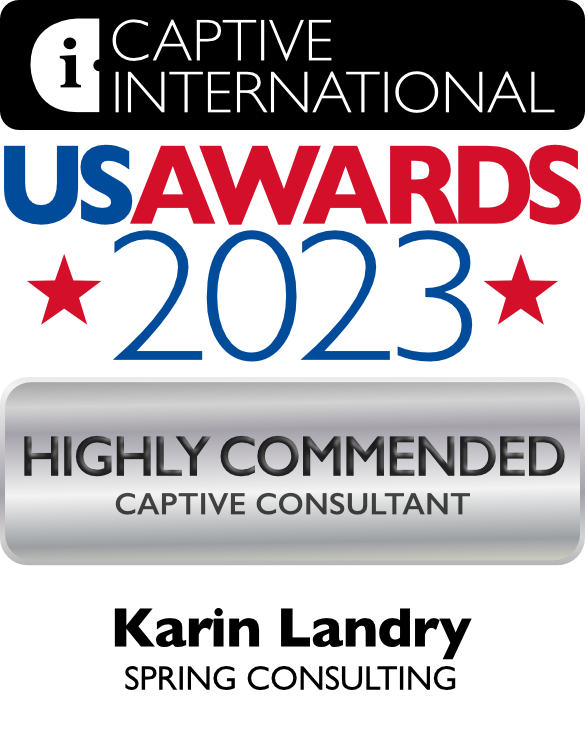

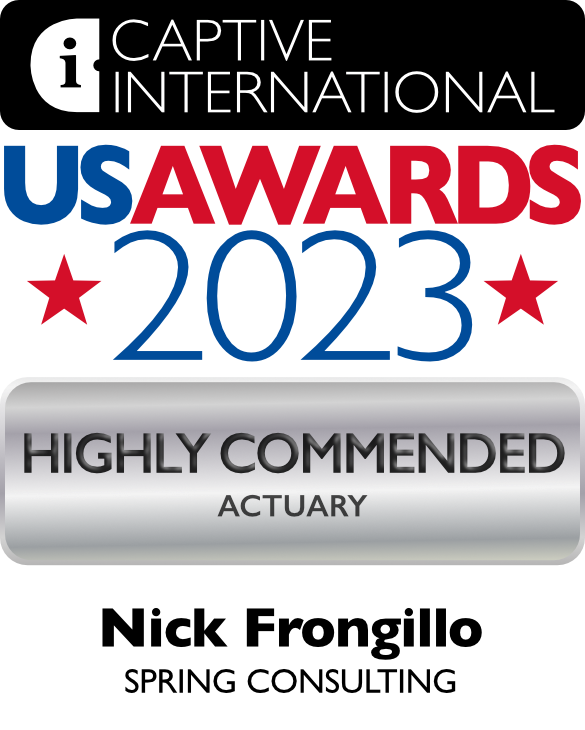
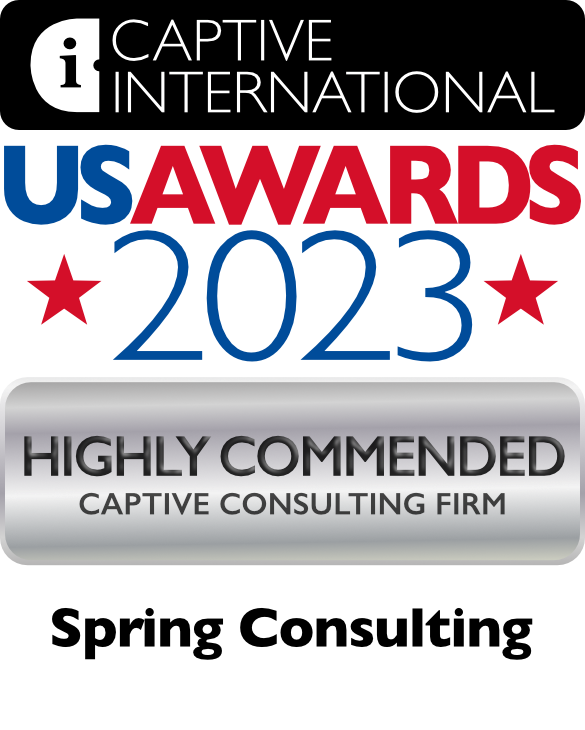
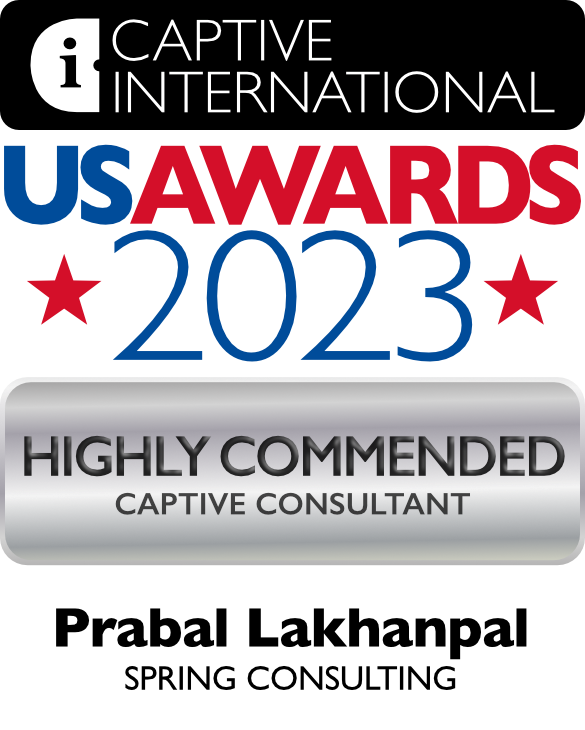
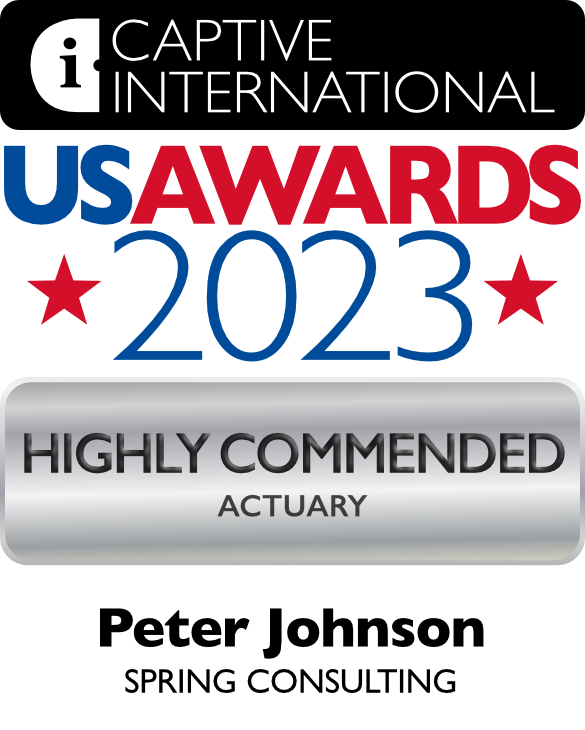
In Captive Intelligence’s latest Global Captive Podcast episode (#91), our Vice President, TJ Scherer shares details about his new role at Spring and reviews his experience in the captive and P&C arena.